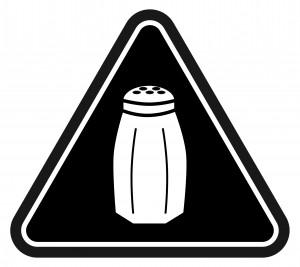Below is my blog post for Huffington Post, “Hold the salt: NYC warning labels and tips you can take to shake the habit.”
You can also read it HERE.

As a nutritionist and health advocate in New York City (NYC), I applaud the New York City Department of Health’s latest attempt to help New Yorker’s get healthier.
Effective this week, diners in NYC will be able to spot foods on menus of chain restaurants that are too high in salt. NYC is the first city in the United States to require eating establishments to post warning labels next to menu items that contain too much salt.
According to the proposal, which was passed unanimously in September by the city’s Board of Health, chain restaurants with 15 or more outlets, will be required to display a salt shaker icon for menus items that contain 2300 milligrams (mg) of sodium–about a teaspoon of salt–and the equivalent of the recommended daily intake.
Certain segments of the population, including individuals over 51, those with diabetes or kidney disease, African Americans, and others, are advised to consume no more than 1500 mg sodium daily.
The salt “warning labels” will apply to an estimated 10% of menu items at the NYC chains.
I applaud the measure. Salt — and lots of it — is commonly found in bread, sauces, condiments, deli meat, and pizza. And, large portions of many restaurant meals.
Many consumers are not aware just how much sodium is found in foods typically consumed. And a large majority of us already eat too much salt, with the average intake around 3400 mg of sodium.
I also support the health department’s initiative as I am hoping it will give restaurants an incentive to lower the sodium content in its overly salty menu items.
After all, one meal should not contain an entire day’s worth of sodium.
It’s pretty shocking just how much salt many restaurant meals contain. According tocompany websites, a cheddar and bacon burger at TGI Friday’s contains 4280 mg sodium and the boneless Buffalo chicken salad at Chili’s has 3460 mg.
I hope other cities follow suit.
I am also hoping that this measure will help raise our awareness as to the relationship between sodium and health as well as how we can be more conscious to steps we can take to limit the amount of salt we consume.
Cutting down on salt can help prevent and control high blood pressure and reduce the risk for heart disease and stroke.
In addition to being on the lookout for the salt shaker icons (if you live in NYC), here are six things we can all do to reduce or salt consumption.
1. Limit the salt shaker.
Just 1 teaspoon of salt contains 2300 mg. In my counseling practice, I urge my clients not to keep a salt shaker on the table. Out of sight, out of mind!
2. Cook more.
Restaurant foods tend to be higher in sodium than home cooked meals. Eating at home can help reduce your salt intake.
3. Use spices to add flavor and zest to your favorite foods.
Oregano, black pepper, thyme, and rosemary are a few spices you can try. Spices also impart many health benefits.
4. Go easy on condiments.
Mustard and ketchup contain lots of salt so here׳s a reminder to go easy with them. Next time you are ready to schmear your sandwich with your favorite condiment, start with a smaller portion–a teaspoon instead of a tablespoon, for example.
5. Eat more fresh fruits and vegetables.
Fruits and vegetables are low in sodium and high in the mineral potassium which can help to lower our blood pressure.
6. Watch your portion sizes.
When you practice portion control and eat less, especially when eating out, you are likely to consume fewer calories as well as less salt and sugar. So next time you buy an oversize sandwich for lunch, my suggestion: eat half!
Follow Dr. Lisa Young on Twitter: www.twitter.com/drlisayoung
